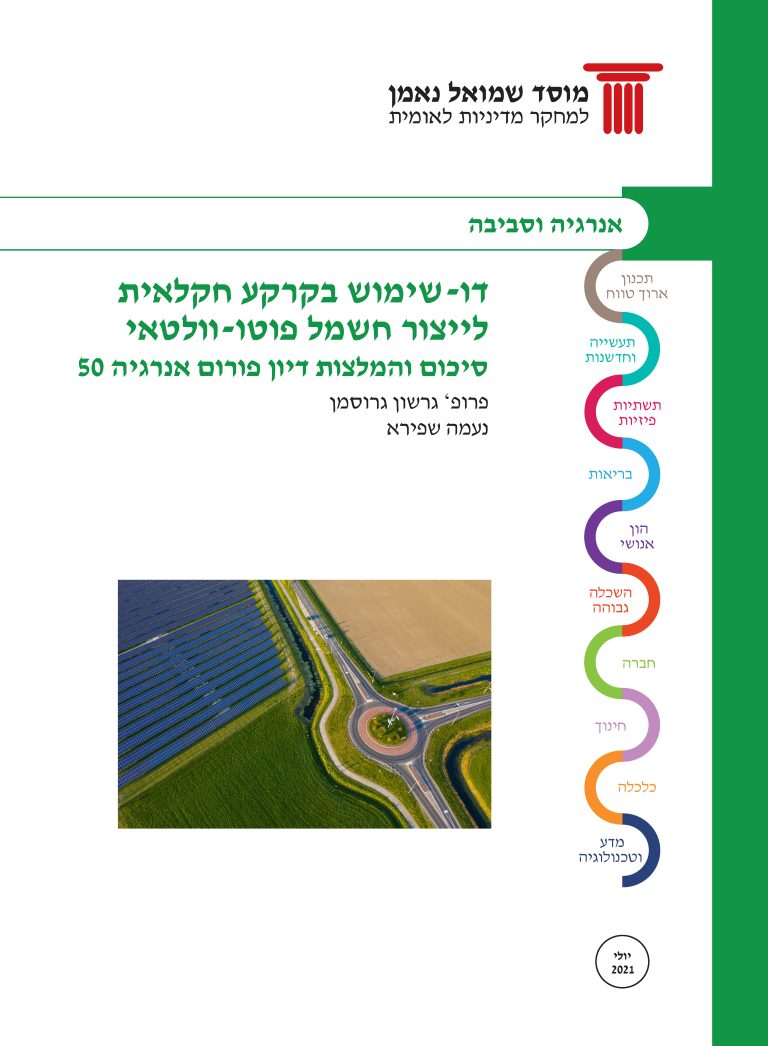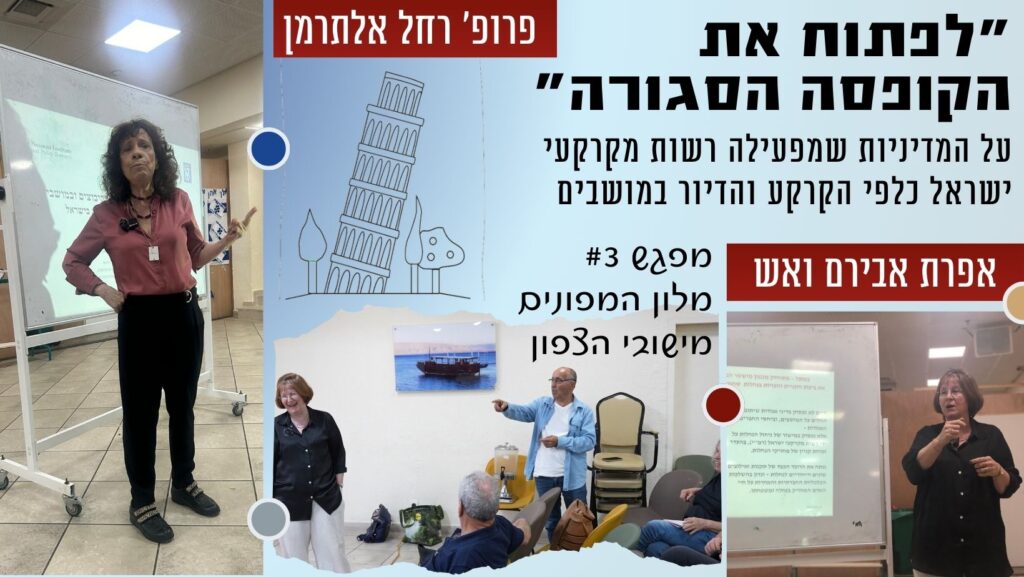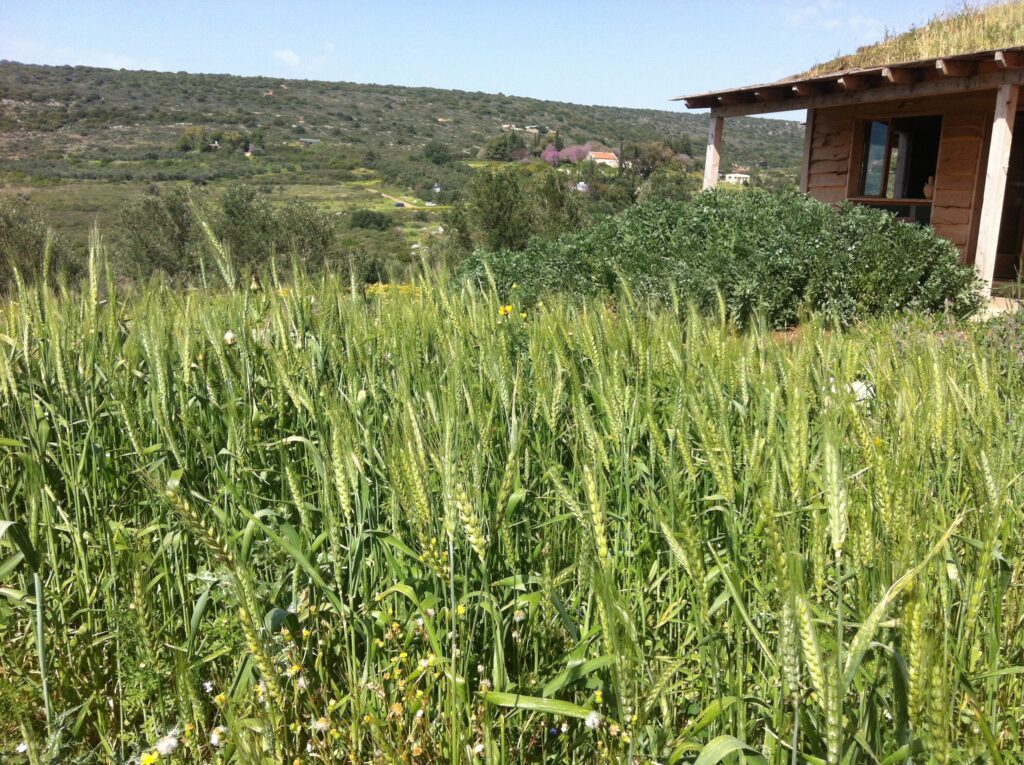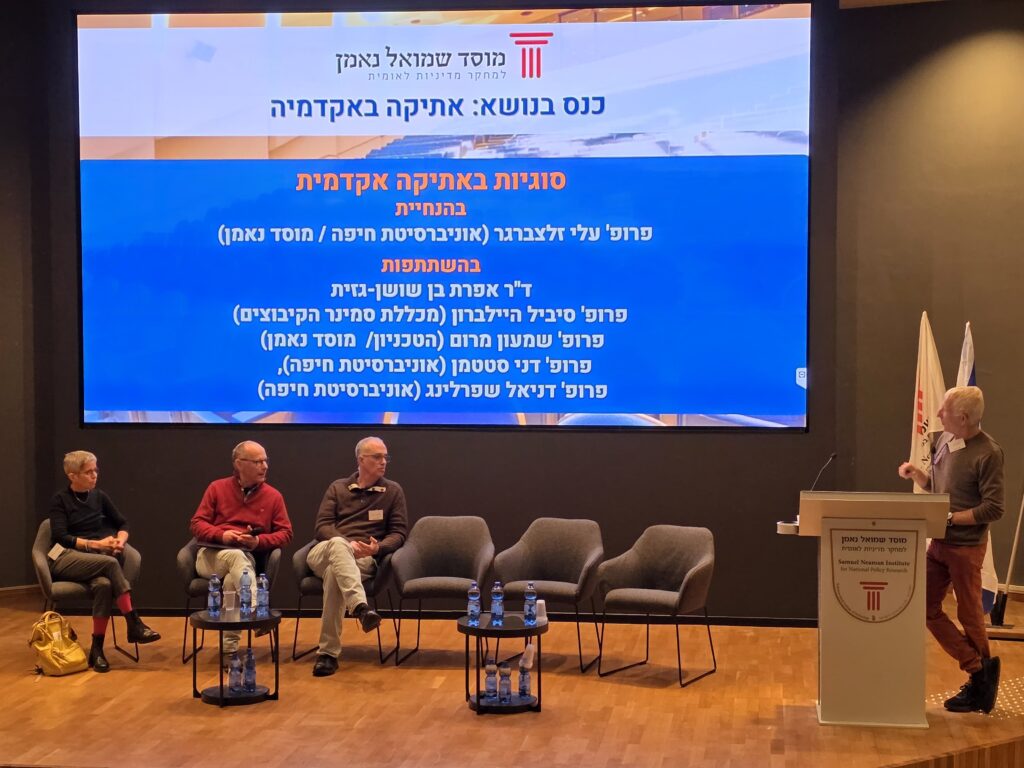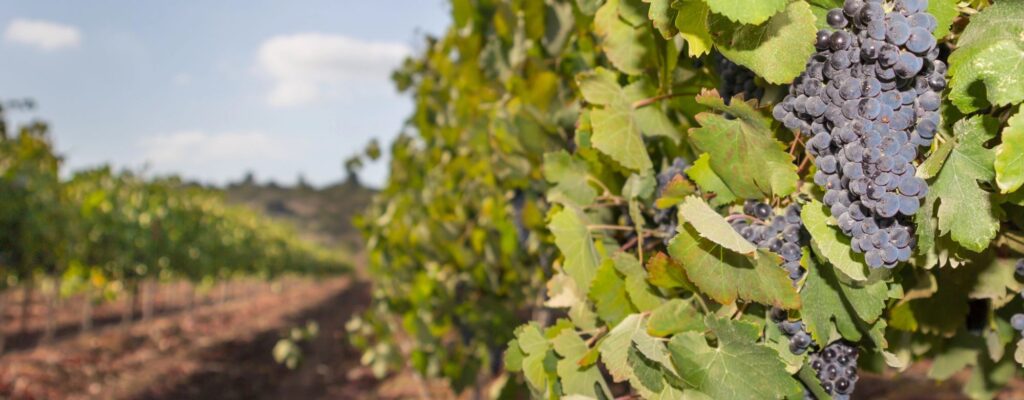The interest in agrivoltaics has emerged following the required and massive transition to renewable energy in the face of the shortage of land. This shortage will increase in the coming years due to the consequences of the climate crisis, the desertification process, dehydration and water shortages, and the expected population growth. The land is a finite resource, especially in a small country like Israel. In developed countries, many suitable areas have already been occupied by real estate and agricultural uses, and developers of solar energy facilities are forced to resort to the dual-use solution, which is both a more ecological and economic solution. The agri-photo-voltaic approach emphasizes the dual use of land for both energy and agriculture to maximize the agricultural yield by which the farmer is measured. It is even possible that regulation will determine indices of the crop’s quantity and quality in the future.
So far, we have seen mostly photovoltaic installations that replaced agriculture. However, we will likely see only integrated installations from now on, and these will be the plans that will be prioritized. With the accumulation of knowledge on the subject, criteria can be formulated that meet both energy and agricultural aspects, including continued agricultural growth throughout the project and the prevention of damage to soil fertility. It will become easier to promote such facilities in agricultural areas.
At the basis of agrivoltaics lies the question of whether plants can live in the shade or partial shade? Studies show that the relationship between photosynthesis (as an indication of the amount of energy and sugar the plant can produce) and solar radiation is a direct positive relationship, up to a certain limit, and exists in almost all plants and different locations. We can conclude that reducing the amount of radiation in some plants will not cause a loss in photosynthesis or only a little loss. There is an understanding that some cooling, especially in a hot country like Israel, can contribute to an accepted level of photosynthesis compared to direct exposure to the sun. In conclusion, the interplay between the amount of radiation and temperature and the amount of photosynthesis forms the basis for agrivoltaics and the various technologies needed to achieve the right balance.
Agrivoltaics can also enhance water use efficiency, depending on the type of plant and the local climate. In addition, there is also an improvement in energy production efficiency. The plant performs cell respiration that produces water vapor that lowers the ambient temperature below that of the photovoltaic panels, resulting in the cooling of the panels and leading, in turn, to an improvement in power generation of 1-3%, because above 25 degrees, as the temperature increases, the efficiency of the panels decreases.
The reasons for the advancement of agri-photo-voltaic installations, similar to ground photovoltaic installations, include the scope of the layout, the height of the installations and their effect on the scenic aspects, and the effect of fencing, as required, on the ecological aspects. This suggests that broad discretion is required that includes aspects of agriculture, landscape, ecology, drainage, electricity connection, and more. Hence, it is still required to consider each case individually and check whether the characteristics of the facility are suitable to the location, in a planned procedure, which is in contrast to the routes for giving licenses to photovoltaic panels, for which it is assumed that the use of the photovoltaic facility is integrated or supplements an approved land use (for example, an area zoned for the industry) which makes possible the establishment of a photovoltaic facility.
The combined use of agriculture and renewable energy production optimizes the use of the resource of land and provides a solution to global warming by adaptation and reduced emissions. It also can add value in other areas, including strengthening agriculture for food security and water saving.
Despite the obvious benefits, widespread application of agrivoltaic practices requires addressing several issues, including the fear of abandoning agriculture in favor of commercial use, questions of distributive justice in the context of the allocation of the land as a resource, considerations in regulating the electricity tariffs, the contradiction between dual-use and the principles of land allocation in Israel, planning aspects, and the desire to preserve farmland as part of the open territory, and as such that serve as a basis for biodiversity.
Recently, the Ministry of Energy, together with the Ministry of Agriculture, is working on developing regulation for this area to create functional regulation that focuses on the desired result while marking defined objectives (e.g., minimizing the damage to agriculture) enabling operational flexibility.
The recommendations of the energy Forum for further treatment of the issue of dual-use of agricultural land for the production of photovoltaic electricity:
1. Integrative Vision: For rapid and effective advancement of the subject, it is necessary to establish an entity that will integrate all the processes and considerations. It should be ensured that the emerging regulation will not produce burdensome and cumbersome bureaucracy but address the issue in a manner that integrates the perspectives of the various stakeholders in a correct and balanced way.
2. Statutory anchoring for agrivoltaic use: A broad definition of agrivoltaic use is required, which will be formulated within the framework of the decisions of the Israel Land Council in the required scopes, with definitions that are appropriate for this use, for example, regarding the scope of payment. The adjustment should also be reflected in a dedicated NOP (National Outline Plan). Special attention is required for the preliminary examination phase (performing the pilots in this area) and the extensive implementation phase.
3. Ensuring the continued existence of agriculture: The implementation of various enforcement and market mechanisms must be examined to ensure the continued and long-term existence of agriculture in agrivoltaic projects. Among other things, it is necessary to examine:o The use of existing legal sanctions – enforcement, field control, termination of lease agreements.
- Setting a normative threshold for crops, depending on the type of crop. Setting such a threshold could be achieved through quantity and quality measures (fruit color, sugar concentration, fatty acids, etc.).
- Determining an electricity rate that is contingent upon the existence of crops, the volume of which will be determined (structured regulatory supervision).
- Providing incentives for implementing optimal agriculture, for example, by setting a quality mark for the execution of an agrivoltaic project that will form part of the score for projects in future tenders.
4. Infrastructures for the energy sector – the integration of agrivoltaic facilities into the energy sector infrastructures must be ensured:
- It must be ensured that the transmission grid does not constitute a limitation for developing agrivoltaic projects by prioritizing such projects in the grid or an electricity tariff that will allow the projects to include storage.
- Dual-use must also be examined in areas designated for energy in the framework of NOP 41.
- Optimal utilization of the transmission grid must be ensured and reducing the deployment of new power lines.
5. Key aspects to consider in preparation for the agrivoltaic pilots:
- Planning aspects – it is recommended to allow pilots to be conducted not only at the R&D sites of the Ministry of Agriculture but also through private developers in other places that are suitable from a planning point of view, on a small scale.
- Environmental aspects – it is recommended to examine the environmental aspects (preservation of open areas, biodiversity, ecological aspects) while conducting the pilots. In the process, fencing and looking for alternatives (technological and otherwise) to fencing must be examined in depth. In examining the agrivoltaic projects, it is recommended to include representatives of the Ministry of Environmental Protection and the Nature and Parks Authority alongside the representatives of the Ministry of Energy and the Ministry of Agriculture to reflect on ecological and environmental issues.
- Electricity tariff – it is recommended to set a normative electricity tariff for the pilot phase to enable the implementation of best practices, as well as to enable the execution of a variety of projects in terms of tested types of crops, different regions in the country (including the center of the country), and different technologies.
- Research and development – it is recommended to allocate public funding (for example, on behalf of the chief scientists of the Ministries of Energy and Agriculture) to ensure scientific and independent results for the research examination of the projects. As the agrivoltaic issue is gaining increasing interest worldwide, the allocation of resources to R&D can contribute to the accelerated development of the field in Israel and form the basis for developing innovative Israeli technologies that can later be marketed worldwide.
6. Distributive justice must be ensured and increasing the “circle of beneficiaries” in the agrivoltaic field, among other things, by the use of tenders.
7. Improving the agricultural interface – after proving the economic feasibility of the agrivoltaic application, the question of whether these projects can be an opportunity to implement new practices to improve the agricultural interface should be examined, such as supporting soil health or preventing soil erosion, which, despite their importance, no effective ways to incentivize them have been found yet.


